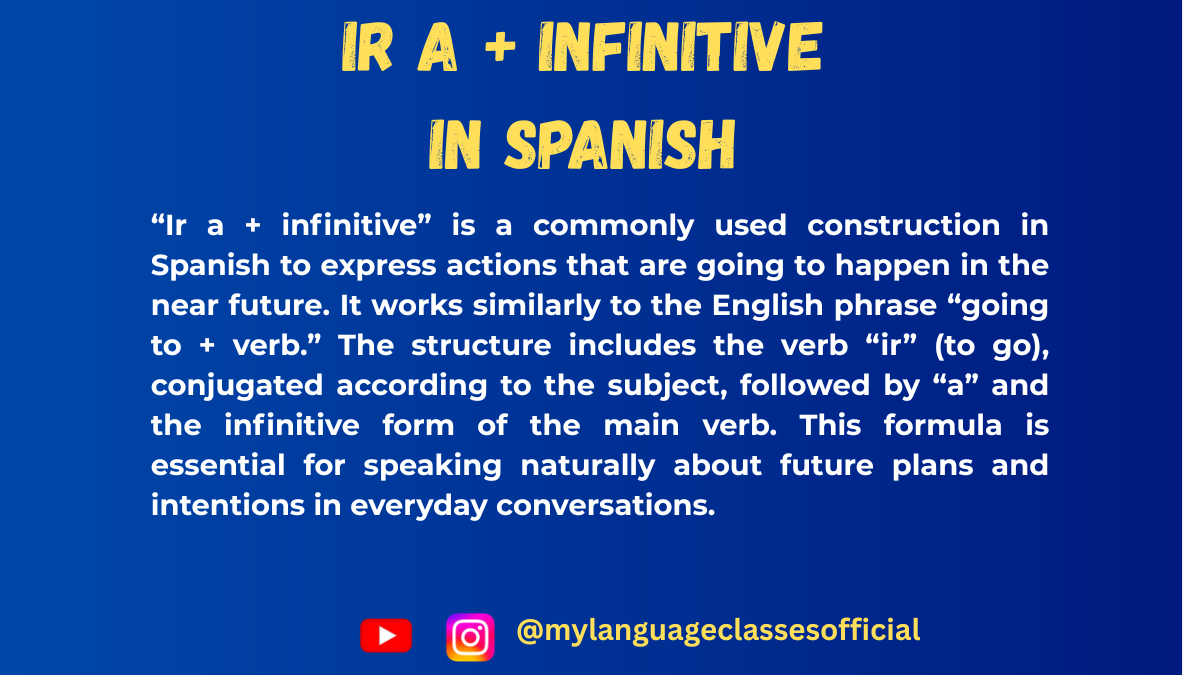Your cart is currently empty!
Tag: near future tense in Spanish

Near Future Tense in Spanish: Mastering Ir a + Infinitive
Near Future Tense in Spanish: Mastering Ir a + Infinitive
If you’re learning Spanish, you’ve likely encountered the phrase voy a estudiar (“I’m going to study”). This construction is an example of the near future tense, a simple and … Read more

